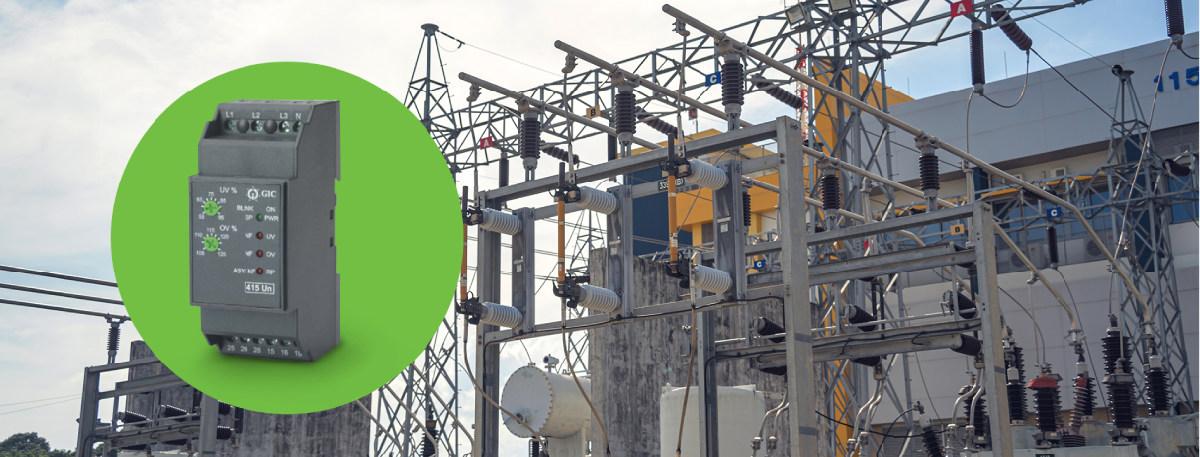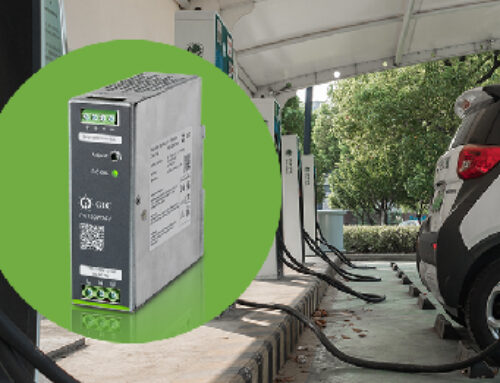
The voltage monitoring relays, manufactured by GIC (General Industrial Controls), play a crucial role in safeguarding electrical equipment by detecting and responding to voltage anomalies.
What is a Voltage Monitoring Relay?
A voltage monitoring relay is a device designed to monitor voltage levels in electrical systems and take appropriate actions in the event of abnormal voltage conditions. It acts as a protective measure to prevent damage to equipment, ensure system stability, and enhance personnel safety.
Working Principle of Voltage Monitoring Relays:
Voltage monitoring relays work on the principle of measurement of true RMS voltage and compare it with the threshold settings. If the voltage drops below or exceeds the threshold value, it trips the relay and isolates the electrical equipment from the supply line.
Features of Voltage Monitoring Relays:
- Adjustable Voltage Setpoints: Most voltage monitoring relays offer adjustable voltage setpoints. It allows users to customize the relay’s response to specific voltage levels, ensuring optimal protection for their electrical equipment.
- Trip Delay: Trip delay allows short voltage spikes, avoiding false tripping. It improves the protection system’s dependability by guaranteeing that the relay will only react to persistently unusual voltage situations.
- Trip Indicators: Voltage monitoring relay includes trip indicators, such as lights or visual displays, to indicate why the relay has tripped. Relays are equipped with these indicators to assist in troubleshooting electrical issues.
- Additional Monitoring Features: Some voltage monitoring relays offer additional monitoring capabilities. These may include phase loss detection, phase sequence monitoring, and neutral fault detection. These features provide comprehensive protection and enable early detection of potential issues in the electrical system.
The Importance of Voltage Monitoring Relays:
- Equipment Protection: Voltage monitoring relays are essential for safeguarding electrical equipment against voltage fluctuation and damage. They detect over-voltage and under-voltage conditions, triggering actions such as circuit breakers tripping or equipment shutdown to prevent damage.
- System Stability: Voltage fluctuations can cause operational issues and potential risks in electrical systems. By monitoring voltage, voltage levels are kept within a safe range, preventing system disruptions and maintaining system stability.
- Personnel Safety: Abnormal voltage conditions can pose risks to personnel working with or around electrical systems. Voltage monitoring relays help mitigate these risks by detecting hazardous voltage levels and triggering safety measures, such as system shutdown or activating warning signals.
- Energy Efficiency: Voltage monitoring relays contribute to energy efficiency in electrical systems. In addition to preventing energy waste from overvoltage or undervoltage, the voltage levels are maintained within an optimal range. It reduces energy consumption and costs by optimizing electrical equipment efficiency.
Conclusion
Voltage monitoring relays from GIC General Industrial Controls are an essential component of electrical systems because they offer critical protection against aberrant voltages. These relays are essential for maintaining system stability, protecting equipment, and advancing energy efficiency. They maintain a safe working environment and stop equipment damage by quickly identifying abnormal voltage circumstances.




